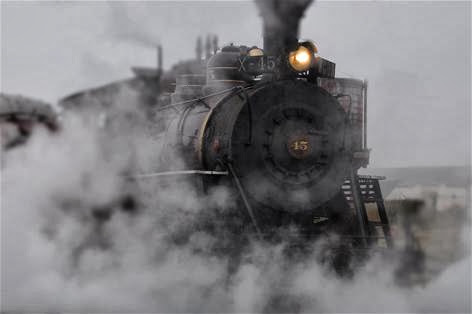Chicago: "Ghost Train" Crashes, 33 Hurt, Train Had No Driver, Security Cameras Were Not Working, Train Passed Through 2 Interlocking Systems Which Should Have Triggered The Brakes

This might be "Terror-related", but for now they're going with the "Ghost" explanation.
From CBS Chicago:
CHICAGO (CBS) — The circumstances surrounding Monday’s collision on the CTA’s Blue Line were so unusual that police at first suspected it had to be a deliberate, criminal act.
What other way to explain how a train could leave a rail yard, drive past one station terminal and travel at least a mile down the wrong tracks without safety mechanisms stopping the cars before the crash?
It appears that’s exactly what happened.
“The million dollar question is, how did this happen?” said Robert Kelly, of Amalgamated Transit Union 308. Kelly said somebody would need to use a key to power up and drive the rail cars.
Witnesses reported that the four-car train, traveling eastbound before smashing into a standing westbound train at Harlem Avenue in Forest Park, did not have a driver and CTA officials said video showed no one was operating the train during the crash.
Some have dubbed it a “ghost train.”
Potentially complicating the investigation, Kelly tells CBS 2, is word that cameras stationed where the train began its mysterious journey were not functioning Monday morning.
Tim DePaepe, the lead investigators with the National Transportation Safety Board, is still trying to figure out how the empty Blue Line train ended up on the tracks.
According to the CTA, that train was marked “Out Of Service” when it began its mysterious ride out of the Forest Park rail yard, where the Blue Line begins in the western suburb.
The train traveled out of the yard and past the Forest Park station stop before traveling eastbound to the next station at Harlem.
The four-car runaway train which struck the standing westbound train filled with passengers at the Harlem Avenue station, was scheduled to go the CTA’s Skokie workshop to repair cars 3 and 4, which had been out of service since last Monday.
At least 33 people were hurt.
Kelly told CBS 2 the train may have been traveling upwards of 20 to 25 miles per hour when it hit the stationary train. What is clear: Several fail-safe mechanism failed to work properly.
Another (one of many) key question: How did the eastbound train manage to leave the Forest Park rail yard and pass over at least two interlocking systems that should have triggered the brakes?
“There were two switches that ideally should have stopped the train, but they did not. Now that could have been a simple matter of those switches being misaligned or not set properly in the first place so we do have fail safes in place however they didn’t function the way they should in this particular case,” said CTA Spokesman Brian Steele.
- Ntsb: Amtrak Assistant Conductor Heard Engineer Say Train Struck By “something”
AND THERE'S ALSO THIS: NBCNews video: Passenger on Amtrak Locomotive Says His Train Was Also Struck by Object A passenger traveling along the same route the night that Amtrak Train 188 derailed in Philadelphia told NBC News that an object hit his...
- Philadelphia: Amtrak Train Entirely Derails, All Seven Cars, "twisted And Torn Like Tinfoil", One Reporter Declares It A "massive Crime Scene"
6 Dead, 146 Injured From CNN: "It is an absolute, disastrous mess," Philadelphia Mayor Michael Nutter said of the crash site. "I've never seen anything like this in my life." Amtrak Northeast Regional Train 188 was traveling from Washington to New...
- Another Train Derailment - This Time In Louisiana, Dangerous Chemicals Are Leaked, 100 Homes Evacuated
There sure are a lot of train accidents lately. Fox:Louisiana Gov. Bobby Jindal said late Sunday that chemicals were leaking from a train carrying flammable and corrosive materials that derailed Sunday afternoon and forced the evacuation of around 100...
- Train Derailment In London
Hmm? (From the London Telegraph): Passengers feared they had been caught up in a terrorist attack when the westbound Central line train derailed between Mile End and Bethnal Green in east London yesterday morning. About 900 commuters - many covered...
- Spanish Subway Train Going Twice Normal Speed
Specualtion is the driver has passed out or become incapacitated in some way: VALENCIA, Spain - A train that derailed and killed 41 people in Spain's worst subway accident was traveling at twice the normal speed, a government official said Tuesday....
